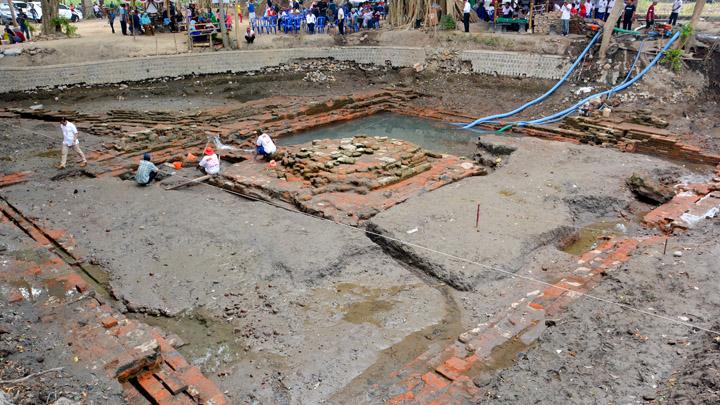
TEMPO.CO, Jakarta - Ohotya village in Mimika Regency, Papua, was lively in the afternoon. Children came out to play around their stilt houses as the adults finished their daily chores. Ansalma Matnarewa, one of the villagers, just returned from the mangrove forest not far from her village. She was carrying a medium-sized noken, a traditional woven bag.
Ansalma put the bag on the floor of her kitchen and checked her catch of the day. Unprepared, she accidentally let out a large mud crab (Scylla serrata), also known as karaka in the local language. Still covered in mud, the crab walked sideways across the room, its claws up in the air ready to attack.
"Careful, those claws can hurt people badly," the 32-year-old woman told Tempo English last month.
She took her small child, who had been watching her in the kitchen, out of harm's way and grabbed a long, thin metal hook to hold down the mud crab. With ease, Ansalma held the wetland creature right in the middle of its shell and quickly tied the claws with plastic rope to incapacitate it. She did the same thing to the two other crabs in her noken, one looked smaller than the others.
"The big ones I can sell for Rp50,000. For the small one, I can probably get Rp40,000," Ansalma said.
She sold the mud crabs to collectors in the village. These collectors would gather as many crabs as possible from the villagers and transport them to Timika, the capital city of Mimika Regency. Karaka is a popular delicacy in Papua, especially in the Mimika Regency. Its large size and shell hide a lot of crab meat. Visitor can easily find karaka dishes in Timika. There are many restaurants all over the city that sell mud crabs.
Ansalma said the price of mud crabs was better now because the village chief had come up with a rule that stipulates collectors take turns in harvesting the crabs. Previously, the villagers could sell however many crabs to the 10 collectors in the village. This pushed the price of the crabs down since the collectors took a long time to gather enough crabs to transport to Timika.
"They have to make sure the crabs are alive. Dead crabs are worthless," said Lukas Harepa, 35, a villager who hunts mud crabs for a living. That is why the collectors must bring the mud crabs to the city as fast as they can.
However, the boat ride from the village to Timika takes about two hours along the river. The crab collectors will lose money over the transportation cost if they only bring a small number of mud crabs at a time.
"A villager can catch two to three mud crabs four if we're lucky," Lukas said. "We usually don't go hunting on Sundays because we go to Sunday service at church."
Around 125 families currently live in Ohotya village. With the village rule in force, the collectors can gather enough crabs within a day or two. But Ansalma is unhappy as she must work harder to catch the mud crabs in the mangrove forest.
"There used to be so many karaka around here. We didn't have to travel so far or spend too long to catch them," Ansalma said.
These days, Ansalma has to go by boat to an uninhabited island nearby because Ohotya village has no more mud crabs. The villagers had harvested mud crabs without care for sustainability.
Despite last year's marine affairs and fisheries ministerial regulation prohibiting the capture of crabs less than 15 centimeters in length and fertilized female crabs, Ansalma was getting fewer crabs this year. She admitted sometimes she would still sell the smaller or fertilized female crabs to the collectors.
"It's against the regulation, but I need to earn money for my family," Ansalma said. (*)
Read more inspiring Outreach stories in Tempo English Weekly News Magazine























